Dams, Sand Mining Threaten to Wreck Mekong Delta
More than sea-level rise, unsustainable development on its rivers is the biggest risk to the delta’s economy and ecology.
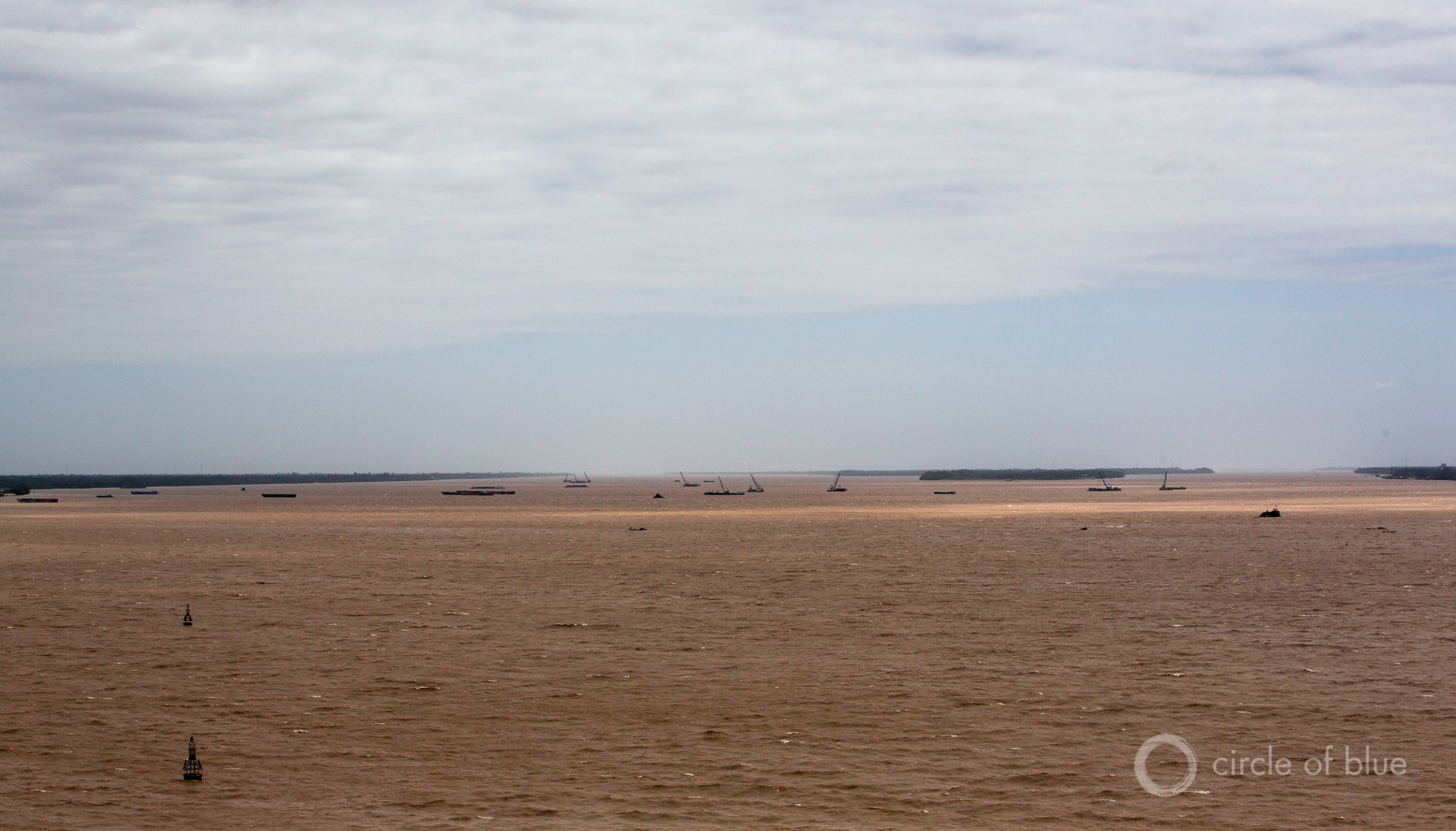
Sand miners operate in the Mekong delta south of Vietnam’s Co Chien bridge. Here, they remove sediments directly from the river bed. Photo © J. Carl Ganter/Circle of Blue
By Brett Walton, Circle of Blue
About 18 million people live in the low-lying Mekong delta, where half the land is less than 1 meter above sea level.
Sepehr Eslami looks across this geographical profile and sees a vulnerable landscape. To rising seas, certainly. But given the relatively slow rate of sea-level rise, which is currently measured in millimeters per year, that aspect is a minor player right now in the delta’s unraveling, he says.
What most concerns Eslami, a Ph.D. candidate at Utrecht University in the Netherlands, is damage that is occurring to the rivers of the six-country watershed, and the harmful effects that extend downstream. Two developments are particularly destructive to the delta, which is located wholly in Vietnam: sand mines and hydropower dams. Together, they are starving the delta of its chief building block, the nutrient that fortifies its shores and keeps the sea from encroaching, which is sediment.
“Climate change is a mid-term threat,” Eslami explained. “Nevertheless, every single issue we see in the basin” — fisheries decline, land subsidence, saltwater intrusion — “is all connected to unsustainable development along the river. Unsustainable development is destroying the basin far faster than climate change in the last twenty years.”
The sediment deficit results in higher tides and saltier waters within the delta, according to a study that Eslami and colleagues published this month in the journal Nature Scientific Reports. Less sediment gives rise to deeper channels in the river. These channels, some 2 to 3 meters deeper in the last two decades, act like an extra lane on a freeway: denser salt water, which sinks to the bottom, has a clearer path inland.
Tides within the delta are increasing 10 times faster than the level of the open sea, Eslami and his colleagues found.
Bucket by bucket, sand miners devour the river bed of the Mekong and its many branches within the delta. The product they mine is used in the construction industry, to fuel the high-rise and road-building boom in growing Asia.
Sand mining licenses in 2015 in Vietnam likely equaled the total sediment contribution from the river. Even that may be an undercount, Eslami said. The data set is “conservative” he said, accounting only for the volumes authorized by government permits. Illegal mining is rampant.
“It’s a huge industry, and the supply chain is completely opaque and unregulated,” Marc Goichot, water lead for WWF Greater Mekong Program, told Circle of Blue. Sand mining is “a huge challenge” for the delta’s waterways, he added.
Farther upstream, massive hydropower dams block natural sediment flows. Initially confined to China, in the upper reaches of the watershed, these sediment-trapping structures are now in vogue lower in the basin.
There are six mainstem dams, including the recently inaugurated Xayaburi Dam in Laos, which the government began filling in October. The basin’s tributaries hold another 170 or so hydropower dams and 180 irrigation dams.
The upper Mekong is small but powerful when it comes to sediment. That portion of the river provides only 13 percent of the water that flows into the delta, but it accounts for between 40 and 60 percent of the sediment, proving that even though dams may be geographically distant they are closely connected to the delta’s lifeblood.
A Delta In Flux
Saltwater intrusion is minimal during the wet season, between July and October, when freshwater flows are strong and the ocean moves only a few kilometers inland.
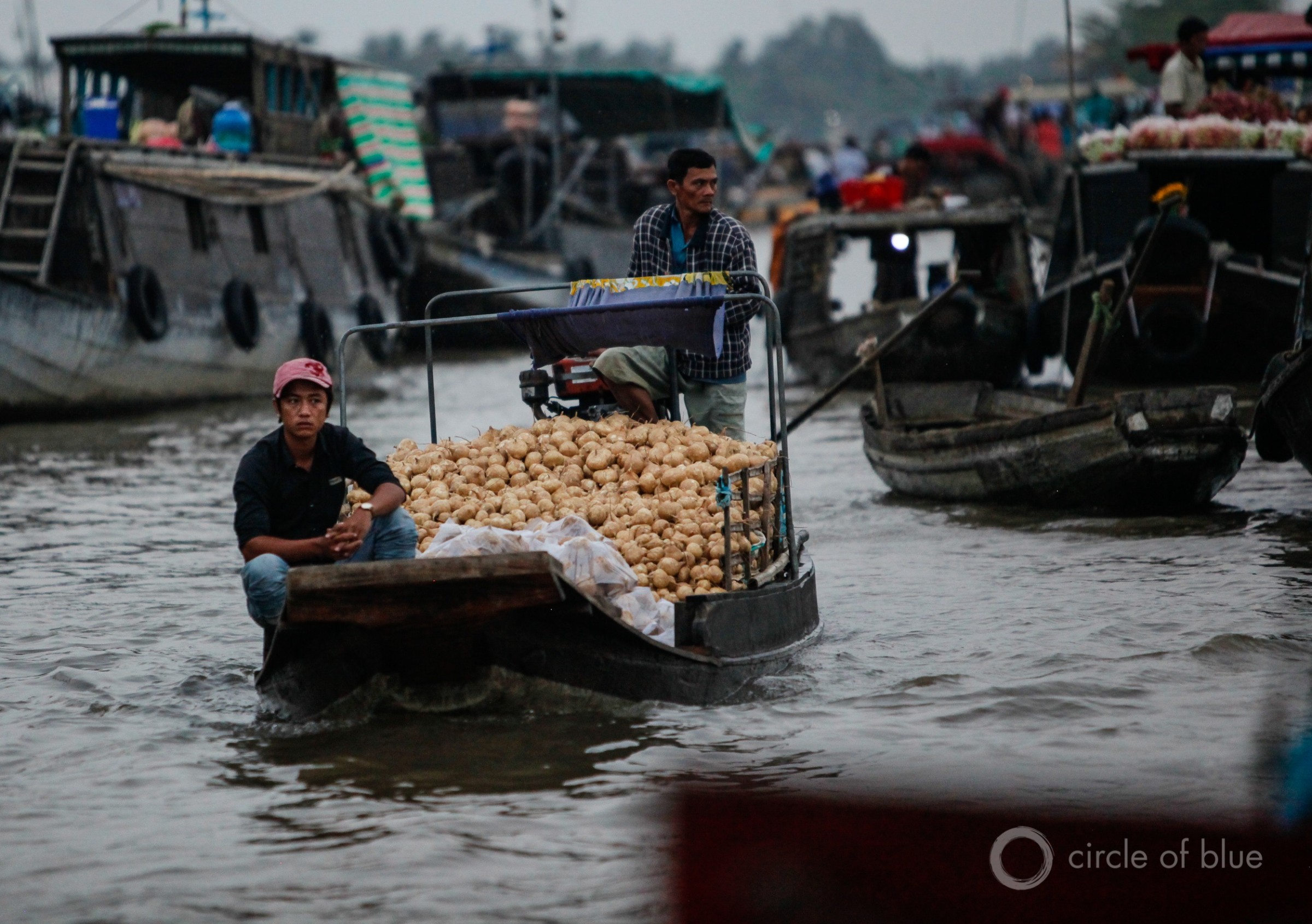
Farmers in the Mekong delta move their produce to market. Photo © J. Carl Ganter/Circle of Blue
The situation is much worse from December to May. In the dry season, salt levels can move dozens of kilometers upstream. During an abnormally dry 2016, saltwater intrusion set a record. According to local reports, the salt front was detected some 70 to 80 kilometers inland.
Another severe drought is plaguing the basin, and the Mekong River Commission, a regional body, is warning that saltwater intrusion may again be extensive this dry season. The flow of the Mekong is so diminished and its sediment load so paltry that the MRC published a notice this month to explain why the water’s typically brown hue had turned aquamarine.
Steve Darby is a professor at the University of Southampton who leads an international research project on sediment transport in large rivers. He said the study used solid data and robust methods to show, not speculate, that sediment is being removed from the river faster than it is being replenished.
“This is not sustainable and, indeed, we now know that this has major adverse impacts on people in the delta,” Darby wrote to Circle of Blue in an email.
One of those effects is increased erosion of the river bank, Darby said. Collapsing land is a hazard for people who live close to the water.
Another is on livelihoods. Not only is the delta a homeland for nearly a quarter of Vietnam’s population. It is also a bountiful land, producing about half of the country’s food. Rice is a staple crop
Rice does not grow in salt water, and as salt water infiltrates the fresh water supply, farmers are being forced out of business. Eslami recalled being in a meeting in Vietnam where officials discussed a city home to 100,000 ex-rice farmers.
“Now what?” Eslami asked. The effects may well snowball, challenging the ability of any government to cope. “Some move to aquaculture, but this is a huge transition for any farmer. It’s a huge shift to the local economy if you have to go through that transition. The younger generation might go to the big cities. This translates into a migration crisis.”
Brett writes about agriculture, energy, infrastructure, and the politics and economics of water in the United States. He also writes the Federal Water Tap, Circle of Blue’s weekly digest of U.S. government water news. He is the winner of two Society of Environmental Journalists reporting awards, one of the top honors in American environmental journalism: first place for explanatory reporting for a series on septic system pollution in the United States(2016) and third place for beat reporting in a small market (2014). He received the Sierra Club’s Distinguished Service Award in 2018. Brett lives in Seattle, where he hikes the mountains and bakes pies. Contact Brett Walton

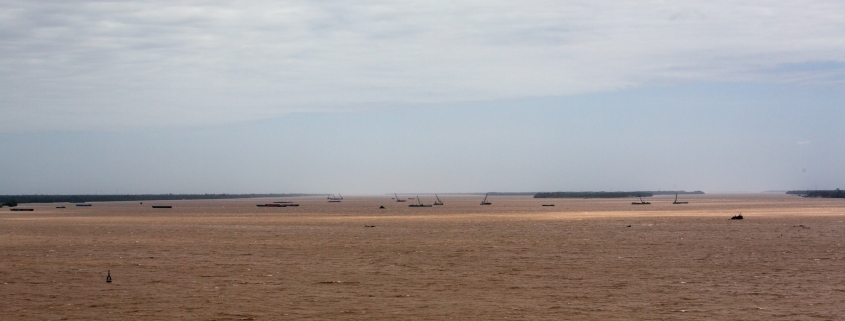

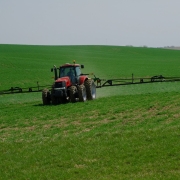
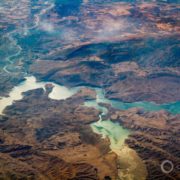

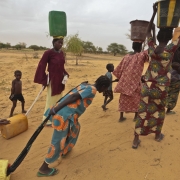





How about using elecktrolysis to make hydrgen fuel to power further elecktrolsys to get H to run H engines to pump and pipe water from the Atlantic across the US, and other oceans to other countries. Energy from H to power all, salt/soft water to homes, they disinfect at their own sinks with small in-home distillers. They get soft water too to their showers. They don’t recycle toilet and mop water anymore. Plus after elektrolisys they have an oxygen pump for the planet. Energy, clean unlimited water, and if the water is too soft people can make and buy water de-softeners. The h can power therml and membrne desal.